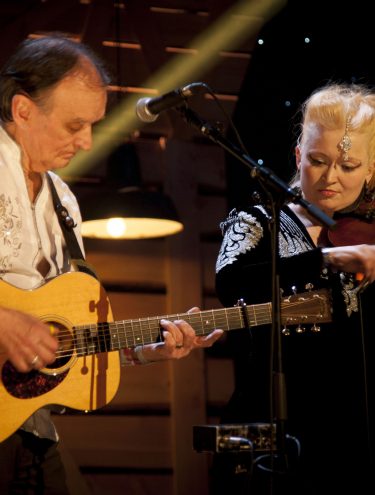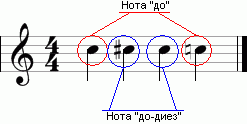
English folk music: the unchanging spirit of tradition
Contents
English folk music as part of English folklore was formed under the influence of historical events of different eras, cultural traditions and aesthetic preferences of the inhabitants of certain regions of the country.
English folklore has its roots in the mythology of the peoples from which the English nation was formed – the Angles, Saxons, Jutes, as well as the Celtic and Germanic tribes. The close proximity to Ireland, Wales, and Scotland could not but be reflected in the similarity of motives and relatedness of the themes and characters of the folklore of these countries with English folk art.
Themes and characters of English folklore
What and who is sung about in the folk songs of England? Let’s list a few main images:
- One of the central characters of the English epic is King Arthur – the legendary leader of the Britons in the fight against the conquerors. There is no irrefutable evidence of his historical existence, but many myths and legends about him and his valiant knights of the round table have become an integral part of English folklore.
- Another hero of English ballads and legends, the reality of whose existence remains controversial, is Robin Hood – the famous leader of the robbers who robbed the rich in Sherwood Forest and gave the loot to the poor and needy.
- In addition, English folklore, as well as Scottish, is replete with many bizarre fairy tale characters – spirits, ghosts, demons, brownies, dragons and other mythological creatures. The latter include elves, trolls, cannibals, witches.
Thus, folklore, as a rule, illuminates the heroism of the liberation struggle or the romantic images of the noble defenders of the oppressed class, and also reproduces some pagan beliefs and legends of the pre-Christian period in the history of England.
Song genres of English folk music and their features
Chronologically, the separation of the folk music of England as a separate cultural layer coincides with the arrival of the Angles on the islands in the XNUMXth century AD. e. Since there was no recording of music at that time, we have a rather generalized idea of the form and content of early English folk songs. Later, on the basis of traditional English songs, such genres as carol, jig, shanti, hornpipe were formed.
Carol currently associated with the Christmas song, although in fact the range of this genre is much wider: it can be a combination of secular and spiritual, or the so-called paraliturgical chants, which use biblical stories and non-canonical texts with the glorification of Jesus Christ. In addition, there are many drinking, lullaby, children’s songs in the carol genre.
One of the most famous song genres of English folk music is ballad. In different historical periods, ballads sang of national heroes (King Arthur or Robin Hood, for example) and had a narrative plot in an emotional romantic setting. The ballad, like the carol, was originally performed in combination with a round dance (round-dance) and only later spun off as an independent song genre.
sea chant songs Initially, they had two purposes: to coordinate the movements of sailors when they performed any ship work and to brighten up the monotonous and monotonous leisure after hard work. Songs of this genre are distinguished by a characteristic emphasis on certain words, during which the sailors made a synchronous effort (a jerk of the rope, for example).
“Green sleeves” or “Green sleeves” – one of the most famous English folk songs that has come down to us from the Middle Ages. The mysterious and bewitching melody plunges the listener into the era of valiant knights and beautiful ladies. The authorship of the song is sometimes given to King Henry VIII, who allegedly dedicated it to his beloved Anne Boleyn. Let’s listen and remember this melody.
Dance genres of English folk music and their features
Its name is English vernacular jig dance borrowed from a small violin, on which the musical accompaniment of the dance was performed. A fast jig in the size of 12/8 is performed, as a rule, by men lined up in one line, symbolizing the fortress wall. A more feminine version of the dance is performed in 9/8 time and involves the use of soft, elastic shoes. The jig technique consists of numerous jumps, pirouettes, and slides performed in different rhythms depending on the type of dance.
Another English folk dance – hornpipe named after another musical instrument – the Scottish wind and has several varieties, among which the most famous are the Rickets Hornpipe and The Ladies Hornpipe. It is performed in various rhythmic patterns and is characterized by swaying movements of the ankles. Initially performed only by men, today it is also available to women.
Dance Morris (or dance with swords) was also originally performed only by men and was a kind of action dedicated to the celebration of May Day. Historians believe that the dance has pagan roots and arose on the basis of ancient rituals. It is performed to the musical accompaniment of bagpipes and drums. Many English people still believe that the Morris dance brings good luck to both the audience and the performers.


English folk musical instruments
Different historical periods enriched the collection of instruments used in the performance of English folk music with samples that made the sound unusually original and original.
One of them is the lute, a stringed plucked instrument that came into English folklore presumably from Arabian culture. Initially, the lute had 4-5 strings, in the modern version the instrument can have up to 35 strings, and therefore its shape has also changed somewhat.


Another traditional folk musical instrument of England is the so-called hammered dulcimer (or cymbals) – a stringed percussion instrument mounted on a stand in front of a musician who uses special hammers to extract sounds.
Quite often, when performing English folklore, the harpsichord, trumpet, tambourine, shawm (a kind of oboe), hurdy gurdy (or hurdy gurdy), violin and bagpipes are used.
English folk music today
A huge contribution to the systematization of English folklore and the preservation of cultural heritage was made by Cecil James Sharp (1859-1924). This English teacher and musicologist managed to systematize the materials collected by various ethnographic groups and collected a unique multi-volume collection of folk songs and ballads. Sharpe’s followers continued his work. Today, interest in English folk music is maintained through folklore festivals, as well as the penetration of folk motifs into modern music.
Author – Igor Svetlichenko




